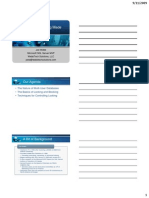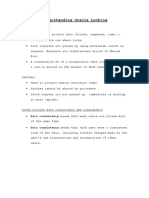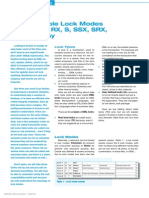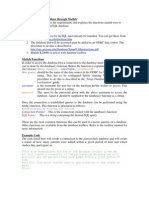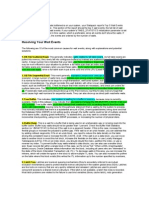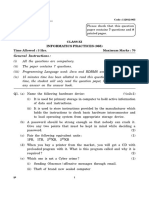0% found this document useful (0 votes)
19 views5 pagesLocks in MS SQL Server 1753208354
The document explains locks in Microsoft SQL Server, which control concurrent access to data during transactions. It details various lock types including Shared, Exclusive, Update, Intent, Schema, Bulk Update, and Key-Range locks, along with their purposes and usage scenarios. Additionally, it discusses the advantages and disadvantages of locks, emphasizing their importance in multi-user environments and critical transactions.
Uploaded by
Fahamitha ParveenCopyright
© © All Rights Reserved
We take content rights seriously. If you suspect this is your content, claim it here.
Available Formats
Download as PDF, TXT or read online on Scribd
0% found this document useful (0 votes)
19 views5 pagesLocks in MS SQL Server 1753208354
The document explains locks in Microsoft SQL Server, which control concurrent access to data during transactions. It details various lock types including Shared, Exclusive, Update, Intent, Schema, Bulk Update, and Key-Range locks, along with their purposes and usage scenarios. Additionally, it discusses the advantages and disadvantages of locks, emphasizing their importance in multi-user environments and critical transactions.
Uploaded by
Fahamitha ParveenCopyright
© © All Rights Reserved
We take content rights seriously. If you suspect this is your content, claim it here.
Available Formats
Download as PDF, TXT or read online on Scribd
/ 5




